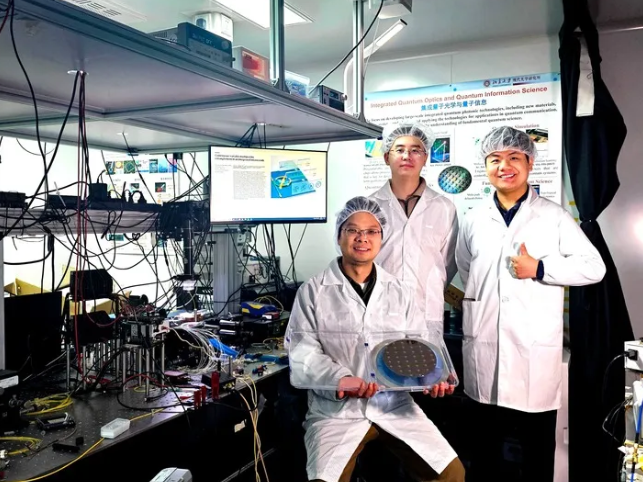The global race for quantum supremacy has intensified as research teams from China and the United States announced major achievements in the top peer-reviewed academic journal Nature, published this week.
Researchers at Peking University have published the world's first large-scale quantum entanglement based on an optical chip, while a Microsoft team claims to have created "topological qubits" - often considered the "holy grail" of quantum technology development.
The Chinese research uses light to generate and control a network of interconnected quantum states, demonstrating the potential to build quantum networks on microchips - a key step toward a quantum Internet that can transmit information securely and efficiently.
One of the paper's reviewers called the achievement "an important milestone for scalable quantum information," noting that similar experiments have previously been attempted in the United States, Europe and Japan.

Microsoft, meanwhile, is hailing its new "Majorana 1" chip as a "quantum computing breakthrough" - intended to store up to 1 million qubits in a way that will make them immune to errors in quantum computing.
Microsoft said in a social media post that the technology is one step closer to "using millions of potential qubits, all integrated on a single chip and working together, to solve unsolvable problems, from the development of new drugs to revolutionary materials."
Microsoft's claims have sparked questions and debate in the scientific community. Some experts think the team is rushing the research by publishing it too soon. One reviewer criticized the paper for its "misleading and ambiguous wording" and for combining theoretical predictions, device design, and experimental results "in a rather sloppy way."
Other reviewers were more positive, with one writing: "I do not agree with the reviewer's opinion that this is not substantial progress. I still find the mere possibility amazing."
Qubits are extremely sensitive to heat and noise, making them unstable and prone to error. Research teams around the world are taking a variety of different approaches to try to solve this problem and thus make quantum computing possible. With their braided design, topological qubits promise to be more stable and accurate than traditional qubits, allowing quantum computers to tackle extremely complex problems far beyond the processing power of today's computers. Physicists at the University of Basel in Switzerland and the Austrian Institute of Science and Technology told the Nature news team that Microsoft may have jumped the ship by submitting premature intermediate results without providing evidence that topological qubits actually exist.
The Microsoft researchers acknowledge that while their measurements show promising signs about strange quantum states, they have yet to provide conclusive evidence and more experiments are needed.
This admission cannot shake off the shadow of previous setbacks. A 2018 paper in Nature, led by a Dutch lab funded by Microsoft, was formally retracted because of flaws in the data analysis. This is seen as a serious blow to Microsoft's quantum strategy.
While the Microsoft team is pinning its quantum hopes on topological qubits, the Peking University researchers are taking a very different approach in their chip design.
The Chinese chips are smaller than Microsoft's and use photonic technology that can operate at room temperature. In contrast, the Majorana 1 chip relies on superconducting materials that need to operate at extremely low temperatures. In the broader global race, Google has also been making significant progress. The company announced a milestone for its "Willow" quantum chip in December.
According to Google, the 105-qubit processor completed in less than five minutes what today's fastest supercomputer would take 10 to the power of 25 years to complete. This article was published by the Hong Kong "South China Morning Post" website on February 21, originally titled "As the two countries announced a technological breakthrough on the same day, the US-China chip war achieved a quantum leap."








